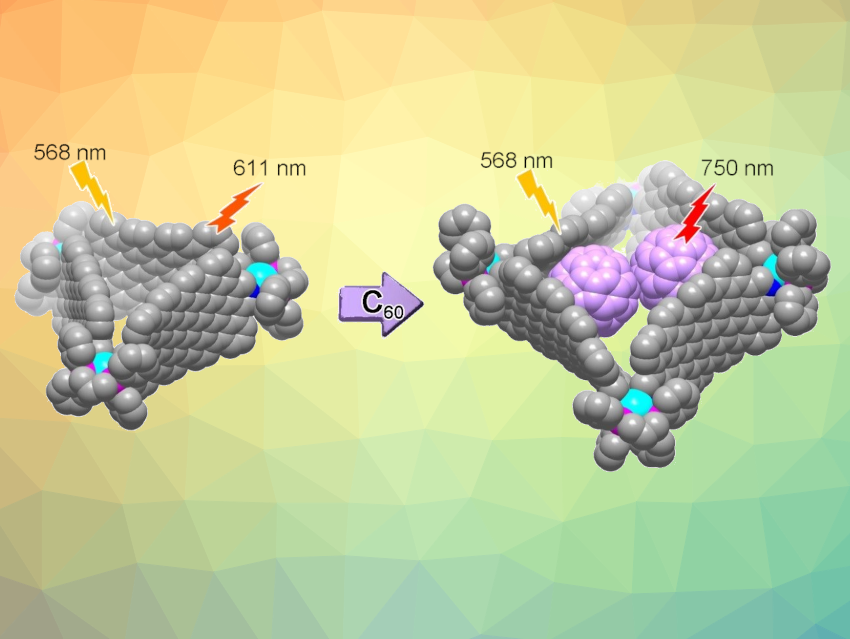Nanographenes typically assemble into stacked, columnar structures. Other supramolecular structures made from nanographenes, such as prisms and cages, are rarely investigated, and comparatively little is known about their structures and properties.
Yuan-Zhi Tan, Xiamen University, China, and colleagues have synthesized a diazananographene and assembled it into a triangular metallaprism (pictured above on the left). The diazananographene, C76N2(C9H11)4(C4H9)3H16, was prepared via the oxidative dehydrocyclization of a precursor that was synthesized using Suzuki coupling reactions. The dehydrocyclization was performed using 2,3-dichloro-5,6-dicyano-1,4-benzoquinone (DDQ) in the presence of triflic acid (TfOH). Three diazananographene units were then transformed into one metallaprism via a reaction with Pd(dppp)(OTf)2 (dppp = 1,3-bis(diphenylphosphino)propane).
The resulting triangular structure was transformed into a square tetramer by adding fullerenes, forming a host–guest complex (pictured above on the right). The emission intensity of the trapped C60 was increased greatly. C60 fullerene is usually considered to be nonemissive due to its extremely low photoluminescence quantum yield. The researchers propose that the formation of dimeric C60 and the efficient light harvesting of the nanographene metallaprism are responsible for this change in optical properties.
These results demonstrate the versatility and unique structures of nanographene-based metallosupramolecular assemblies. The work also shows the ability of hierarchical architectures to enhance the emission of otherwise nonemissive fullerenes, which could be useful for advanced metallosupramolecular materials.
- Nanographene Metallaprisms: Structure, Stimulated Transformation, and Emission Enhancement,
Ling Chai, Yang-Yang Ju, Jiang-Feng Xing, Xiao-Hui Ma, Xin-Jing Zhao, Yuan-Zhi Tan,
Angew. Chem. Int. Ed. 2022.
https://doi.org/10.1002/anie.202210268



![Synthesis of [c2]Daisy Chains via Mechanochemistry](https://www.chemistryviews.org/wp-content/uploads/2025/04/202504_RotaxanesWithSolidStateMechanochemistry-125x94.png)
